Grayson Perry on downsizing his art for Pallant House: ‘Miniaturisation is, I think, having a moment’
A group of artists – including Perry and Damien Hirst – have created tiny artworks during lockdown for a doll’s house-sized exhibition at Pallant House in Chichester. Charlotte Cripps talks to some of them about their mini masterpieces

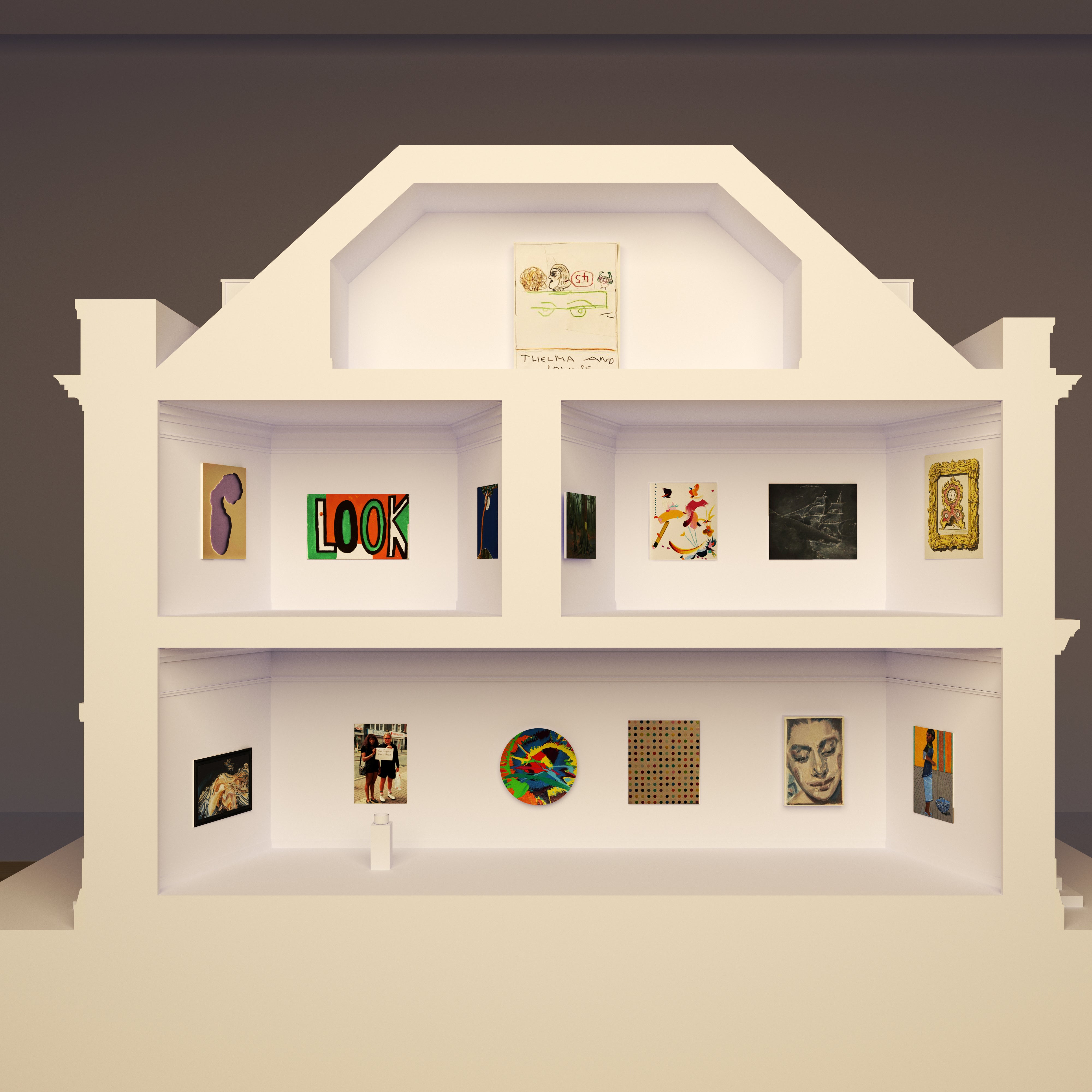
How do you fit artworks by Damien Hirst, Maggi Hambling, Grayson Perry and dozens of others into one doll’s house? Ask them to go miniature. Hirst’s Spin painting; Hambling’s nude; Perry’s ceramic vase – all are on show at Pallant House’s new model art gallery, and none is bigger than 20cm.
More than 30 leading contemporary artists were commissioned during lockdown last year to make tiny artworks for Pallant House’s 2021 model art gallery. The mini gallery – which is about 150cm in length – comes complete with little floorboards that have been laser-cut on the gallery floor. Using mediums including sculpture, ceramics, photography and painting, the artists have created works that range in size from a pound coin up to 20cm.
There is Tacita Dean’s 15cm ghoulish blackboard drawing of a shipwreck; Edmund de Waal’s 2cm porcelain pot with a golden rim; Dexter Dalwood’s 11.5 cm oil painting of a moonlit tree titled Death of David Kelly. The 2017 Turner Prize winner Lubaina Himid – the first black woman to win the prize – has created a miniature oil painting of a woman out shopping that measures only 14cm. Filling a whole room of the model will be John Akomfrah’s miniature installation, with a photographic triptych based on his multi-screen film projections.
The project will go on show alongside two earlier tiny model galleries – one was created in 1934 and recreated in 1997 by Pallant House, using original mini works by artists including Vanessa Bell and Henry Moore. The second, from 2000, contains tiny works by Antony Gormley, Peter Blake and Richard Hamilton. Together they provide a microcosm of British art over 80 years.
It will also include a photographic work by the late Khadija Saye, who died in the Grenfell Tower fire. It is the only work that survived the fire from her Crown series.
Below, eight artists talk us through their work.
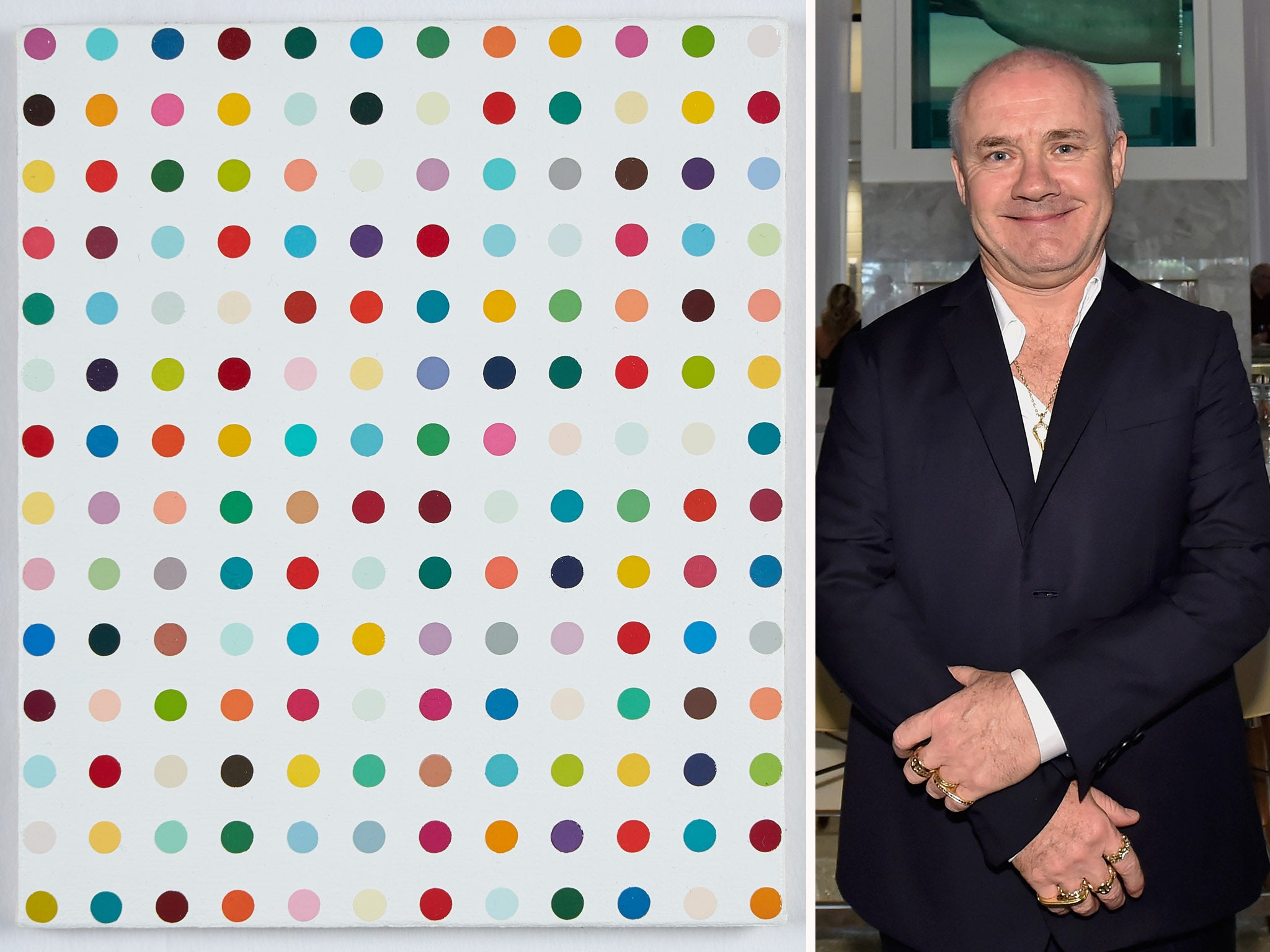
Grayson Perry: National Treasure (2020)
“I love anything miniature: scale models, toys, doll’s houses, train sets. I make a lot of relatively small, detailed artworks. My whole practice probably stems from a childhood making models. Plus, miniaturisation is, I think, having a ‘moment’.
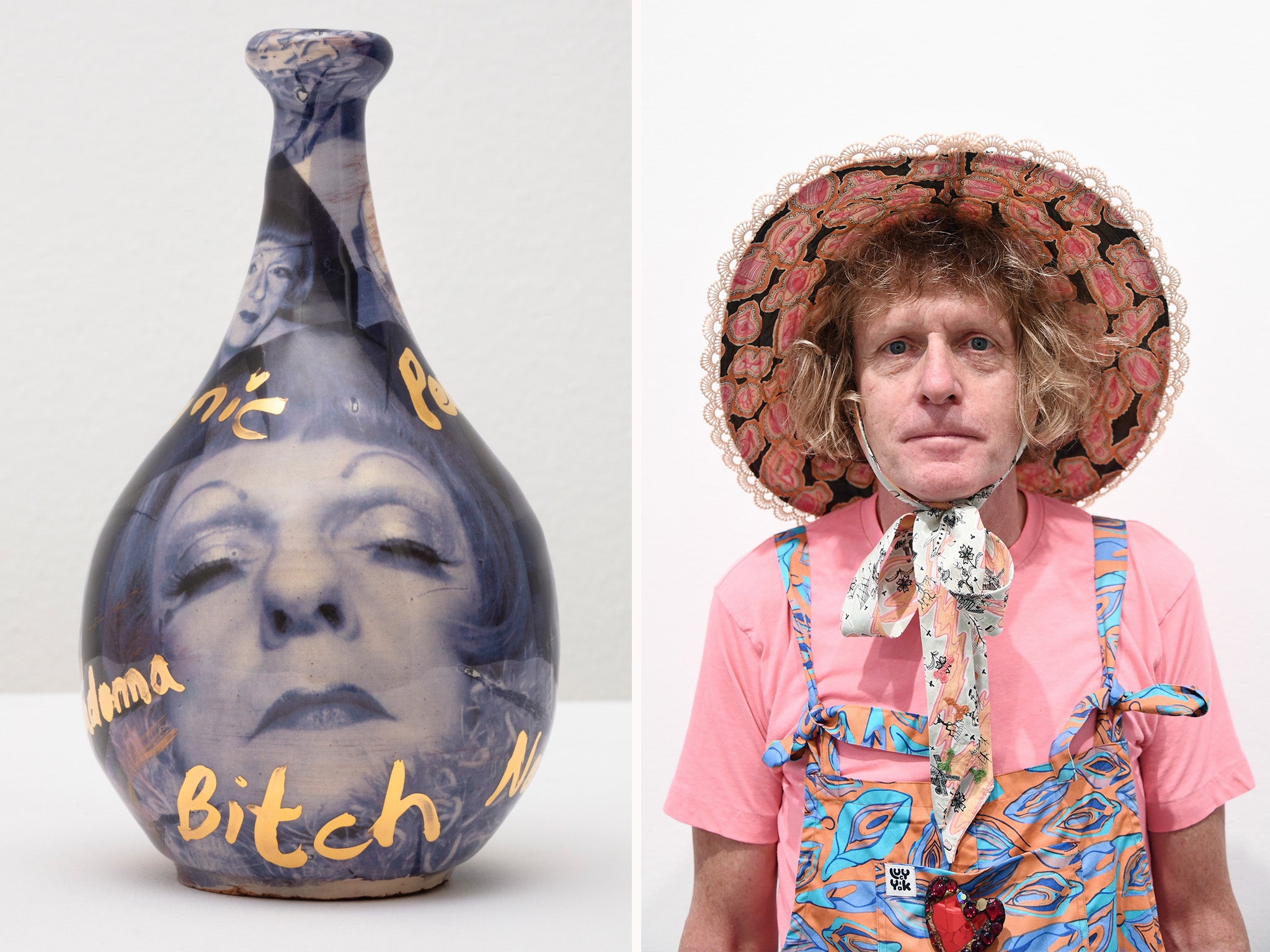
“National Treasure stems directly from a vase I made titled Puff Piece for my Serpentine Gallery show, The Most Popular Art Exhibition Ever!, in 2017. It uses the same photographs of me and was about writing my own rave reviews. I like the blue and white as it hints at classical Chinese porcelains. It’s about the flip side of celebrity; in a world of social media comment, people in the public eye are more than ever expected to be perfect and to hold views that perfectly align with their audience. This is unrealistic and, may I say, immature. We all have a dark side. I have written the seemingly negative words on the pot in gold as I think they are precious qualities to me.
“Scale is very important in art. Someone once said, ‘You will never have a successful art career if your work does not fit into the elevator of a New York apartment block.’ If you depend on private collectors as I do, small is good. I find it much harder to sell some of my larger five-metre-plus tapestries.”
Bob and Roberta Smith (aka Patrick Brill): Look, 2020
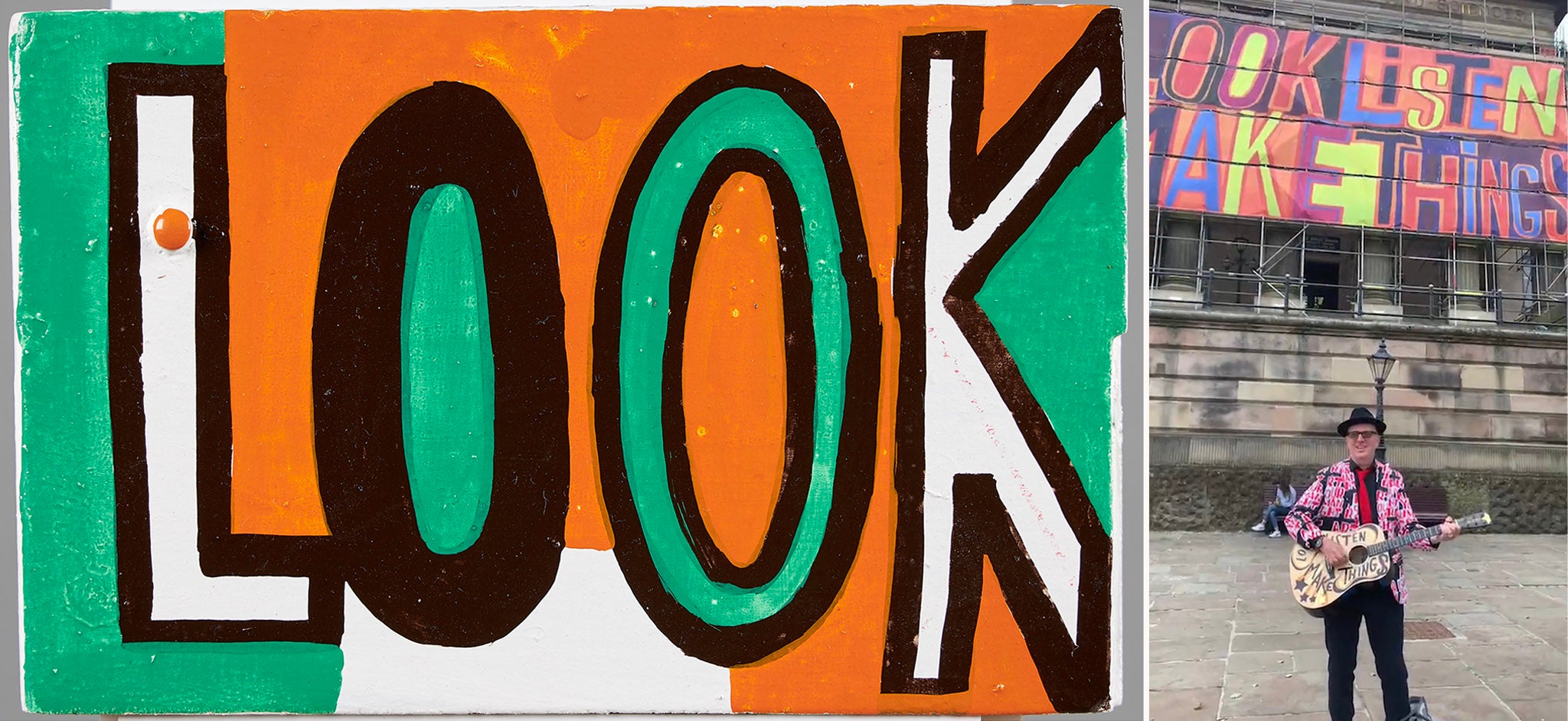
“After a trip to the Prado in Spain, I once decorated our children’s doll’s house with postcards from Goya’s ‘black period’, including Saturn Devouring His Son, Dali’s The Great Masturbator, Picasso’s Guernica and a terrifying image by Bruegel of half-skeleton men engaged in battle. My son was so frightened he could not play with the toy house.
“Sculptors often use maquettes to explore how artworks might look. I have done so myself, but for painters, it’s not often the case. So, to make a ‘small’ painting is to make a painting that is simply just a little painting. It does not of itself imply scale until it enters the mini gallery, but a lot of fun can be had with this approach. The subject of this work is the difference between what something says and what it is.”
Gary Hume: Archipelago, 2020
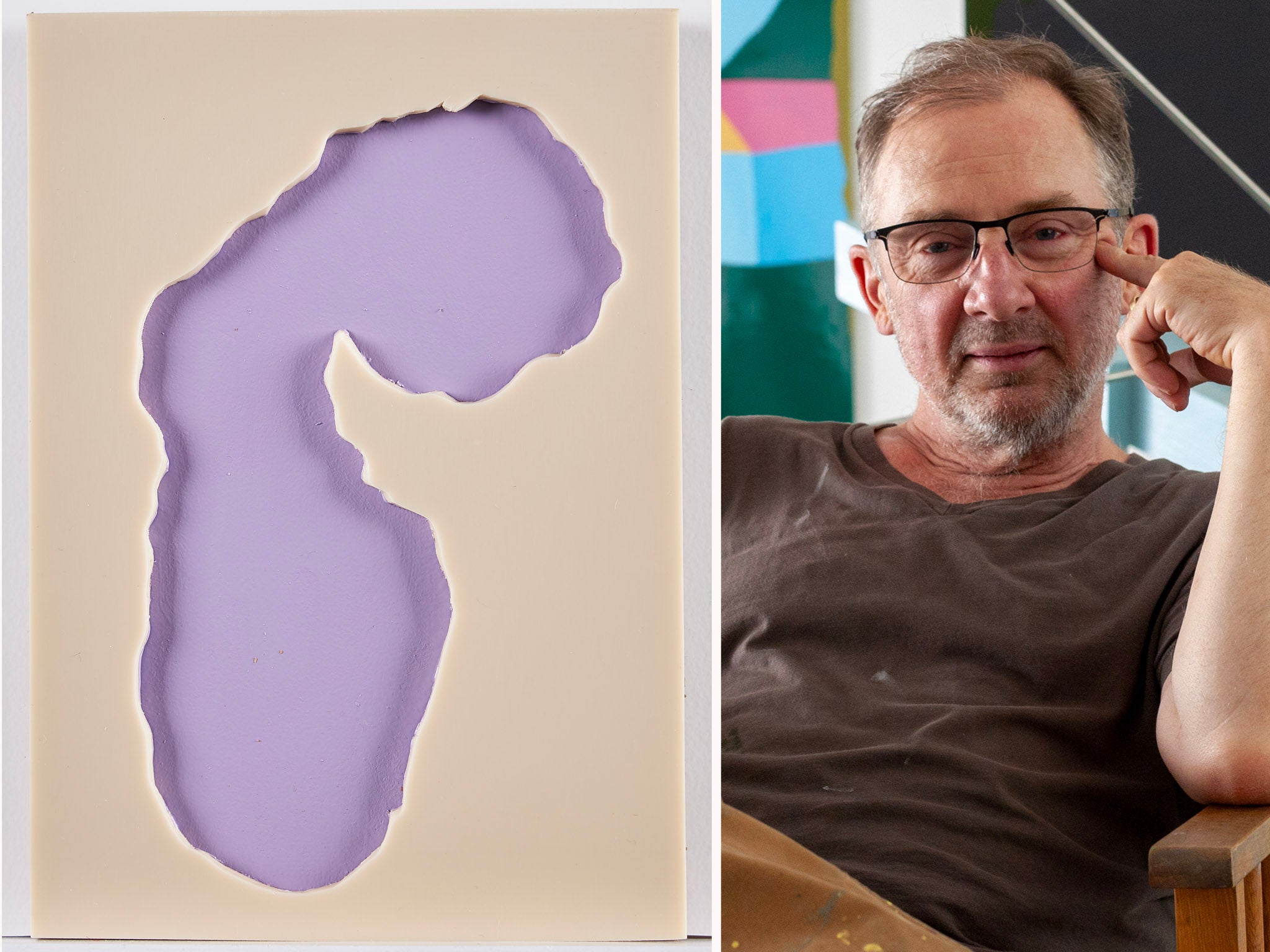
“This is the smallest painting I have ever made. I’m enjoying the perceptual shift while looking at it in the palm of my hand, imagining its eventual shift to reality amongst the largest paintings I have made, once in the model.
“The drawing of this work comes from a series of my paintings entitled Archipelago. It’s my response to the John Donne poem No man is an Island and the ongoing migrant crisis. I wanted in this work to suggest the circular bond between mother and child.
“I am very keen on model villages; if there happens to be one in a town I visit, I will always go. The Goliath viewpoint is somehow settling; realising we are ants on a globe creating dreams. The model museum seems to work in a similar way; a stage for imaginative play separated somewhat from the real world, not unlike the studio.”
Gillian Wearing: Signs that say what you want them to say and not Signs that say what someone else wants you to say WORK TOWARDS WORLD PEACE (2020)
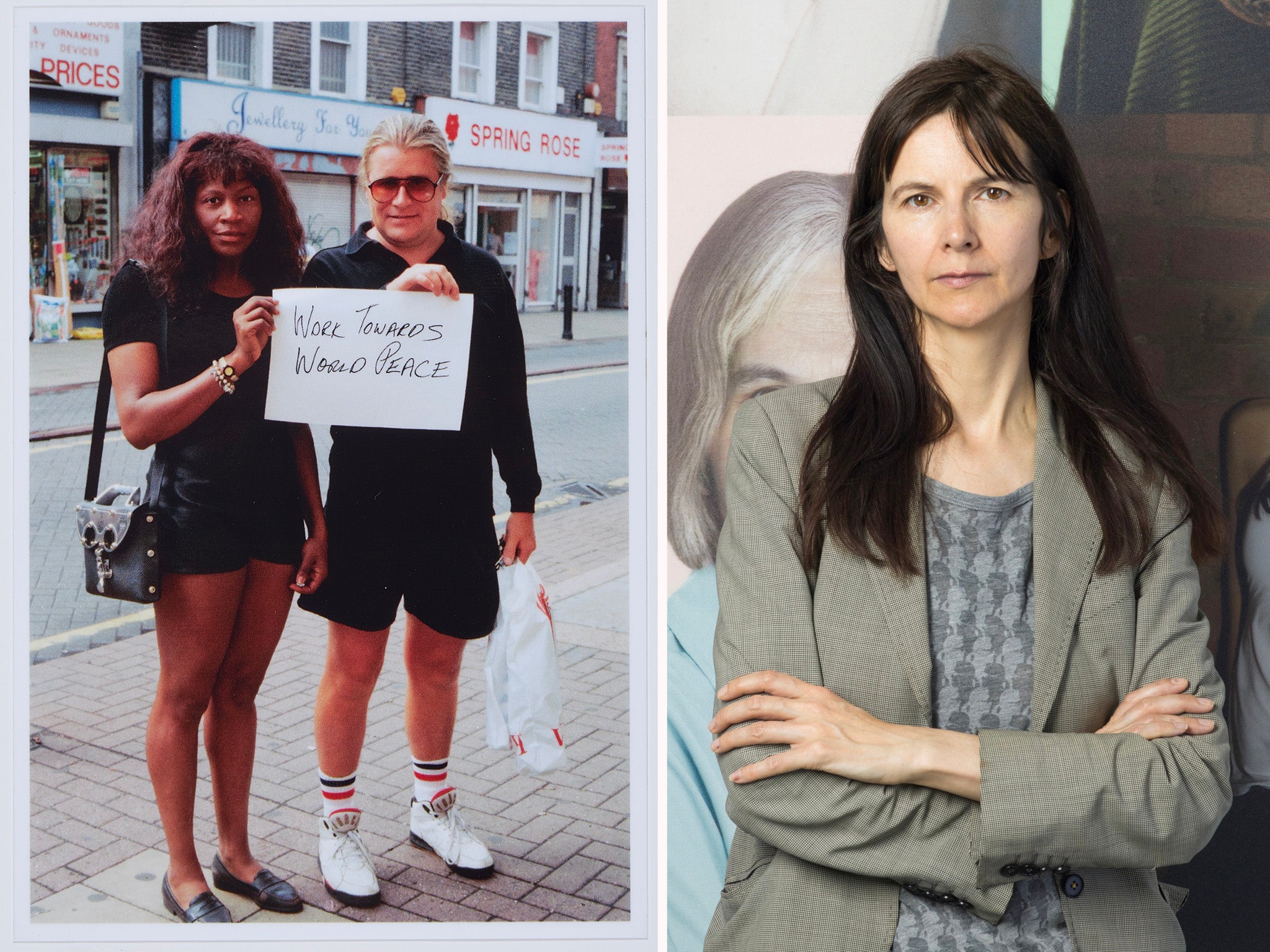
“Very small things, like very large things, are so appealing. This project reminds me of the great work of Duchamp’s, La Boîte-en-valise, where he reproduced many of his famous works at a smaller scale to create a mini museum carried around in a suitcase.
“I have taken an image from my signs series. The original photographs were A3 in size – that is the size of the paper that the participants held with their own self-penned words and thoughts. The photograph I chose from this body of work is of a couple holding the sign ‘Work Towards World Peace’, taken some time between 1992 and 1993. The scale of the mini work may seem intimate but the message holds the same power, and regardless of the fact the photograph was taken nearly 30 years ago.”
Chantal Joffe: Self Portrait from Behind (2021)
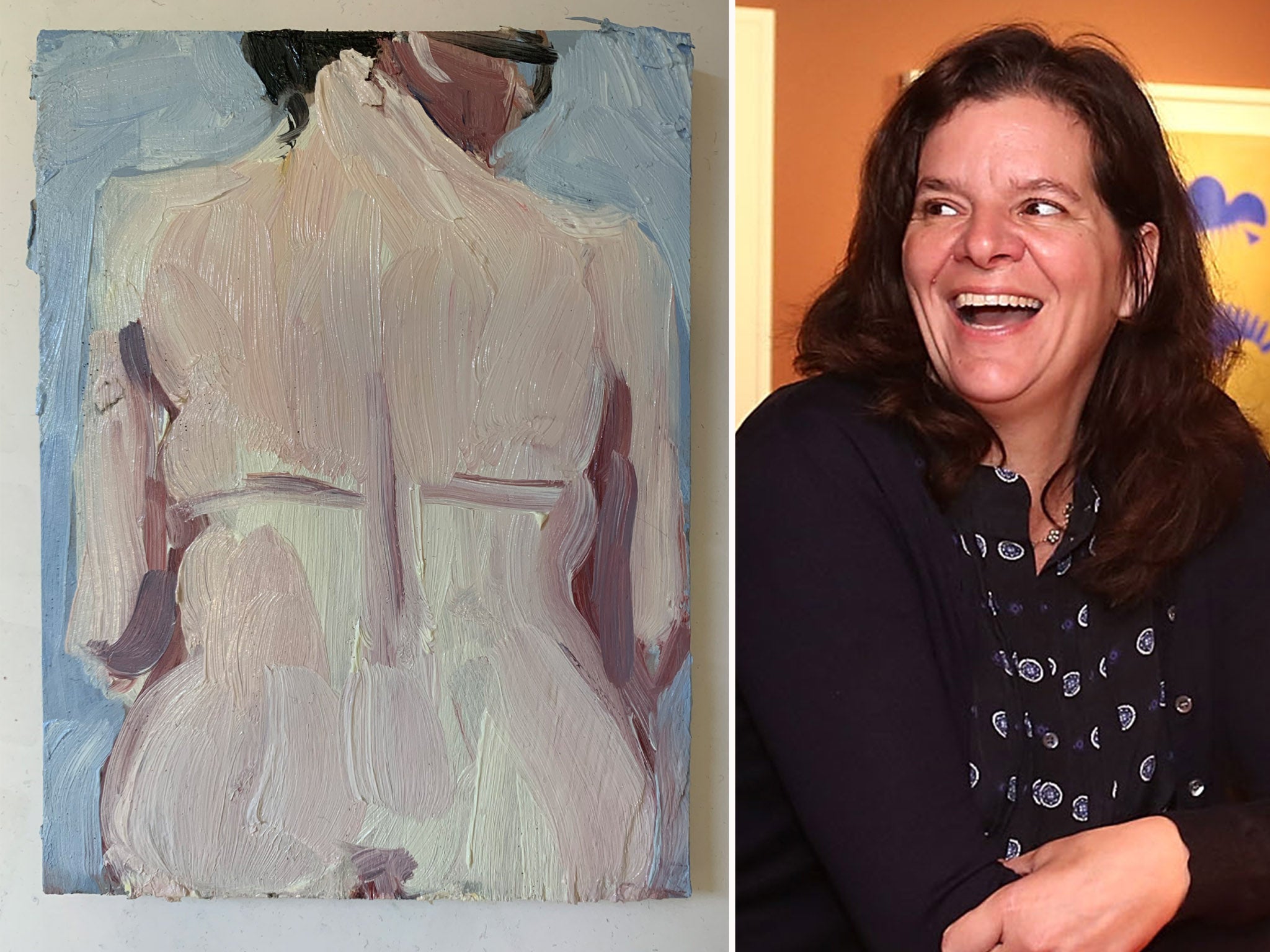
“I like limitations but I realised that the size would be hard for me. I thought a lot about the tiny paintings of Gertrude Abercrombie. It’s part of a group of large self-portraits I was working on at the time (back views). I took photographs of myself with a self-timer from behind and worked from those. I liked the idea of something massive being so small, also of being literally present in the miniature exhibition but only from behind.
“I wanted so badly for it to be good. I kept thinking of small things like a single eye or an acorn but in the end, I wanted it to be a small, big painting, as if in a tiny museum, not a miniature. So the brush marks are big, as if it’s a huge painting – not tiny ones. I had for a little while been thinking about trying to make a miniature on vellum but then that seemed less interesting.”
Pablo Bronstein: Rococo Clock, 2020
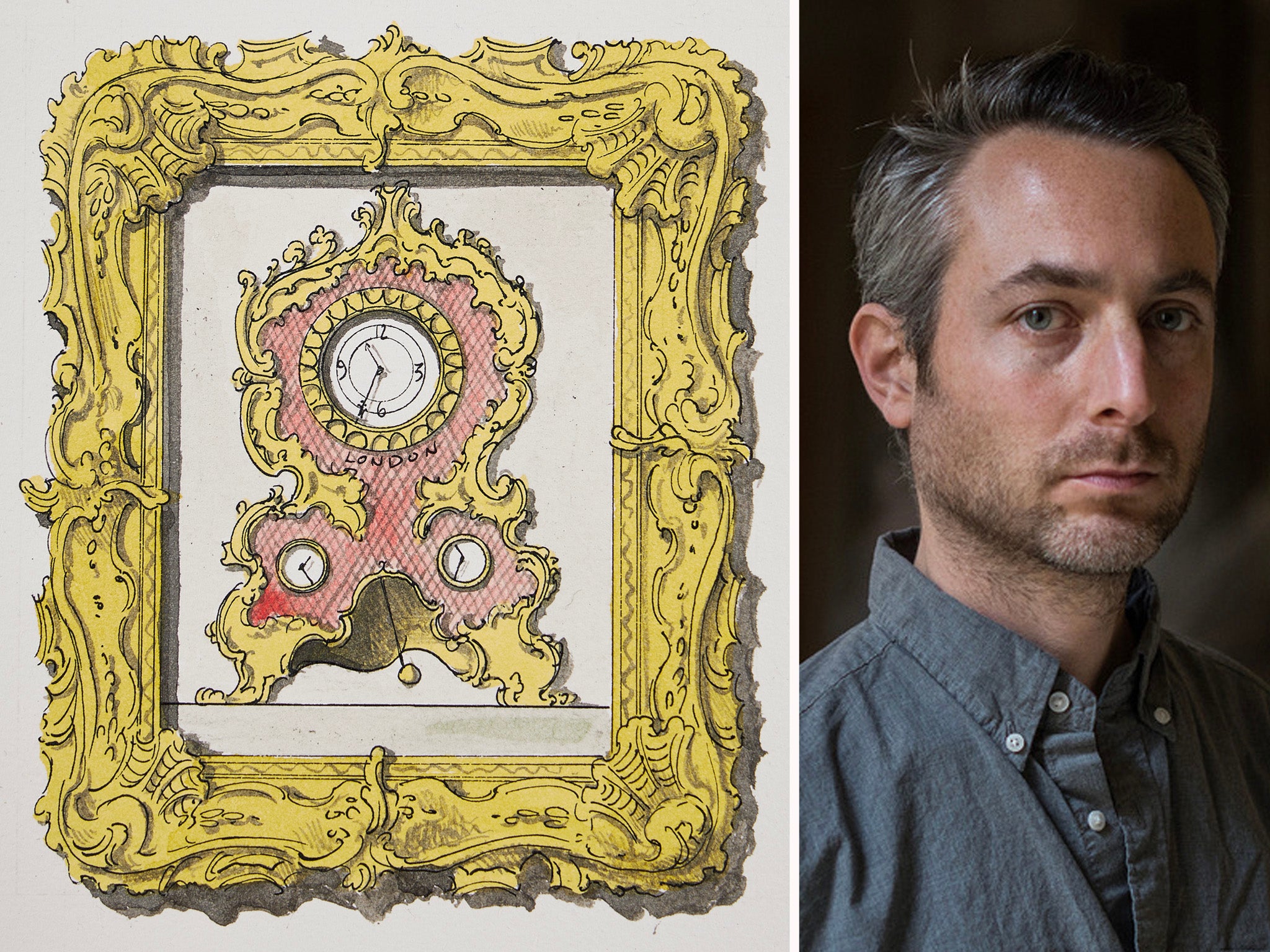
“Despite this being a fun project, it was actually quite a challenge. My work is already very detailed and condensed as it is, so making a miniature version of something already densely elaborate was difficult. The image had to communicate everything that the larger works are able to, and function within a tiny format in a similar way to the way the larger drawings behave. The same ideas, components, design, media technique and execution, not reduced in anything except scale.
“This drawing is related to a clock drawing of mine that is in the collection of the British Museum. The clock has a large centrally placed face that tells the time in the ‘principal’ area, and along the bottom are arrayed very small clock faces that tell the time in ‘subservient’ or ‘dependent’ areas. This is a device I utilise occasionally to speak about issues such as global trade, commercial and military empires, both historical and current, and the relationship between poverty and wealth. These issues are expressed with obvious irony through my designs for flamboyant ‘celebratory’ objects, and the Pallant House miniature clock carries this hidden weight.”
Lubaina Himid, Out Shopping, 2020
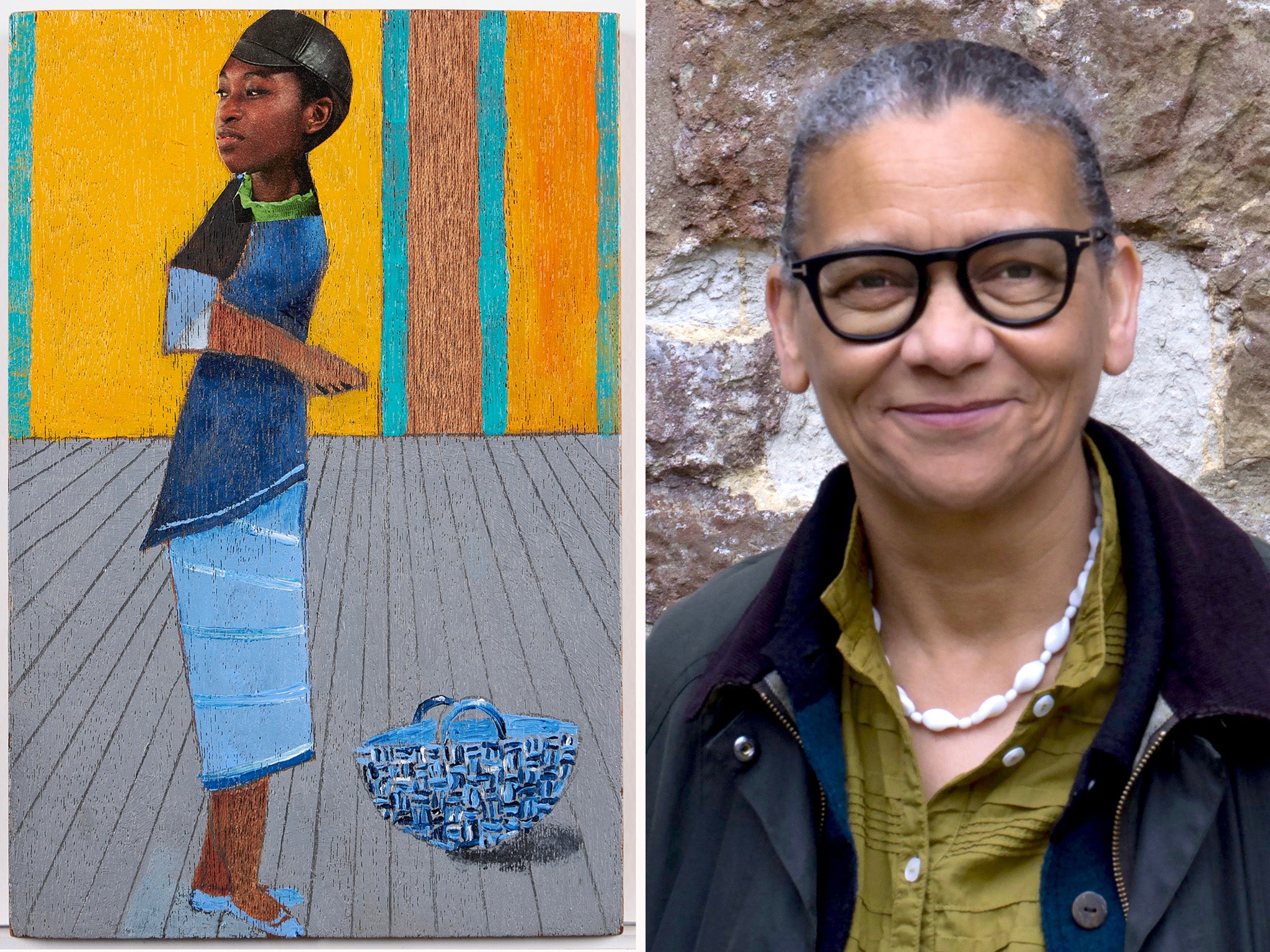
“In the midst of lockdown, I was very busy making a huge collaborative image and sound installation with Magda Stawarska-Beavan called Blue Grid Test for Wiels Art Centre in Brussels. I also had two or three series of paintings on the go. Some were large-scale acrylics on canvas for my Tate Modern show and other more modest works were smaller canvases to help me feel my way through dealing with the death of my mother in February. At the same time, I made works on paper for several print projects to help raise money for a number of arts organisations. So, when I was asked to be part of the Model Art Gallery project, I had to think in a different way. The painting had to be gently intimate.
“To make something that is small but is designed to be presented in a space as if it is full size is a disconcerting thing to do. I enjoy creating small paintings but they would usually be patterned pieces. My large-scale works are often figurative, so dealing with these two elements at once was challenging.
“This piece stands alone in some ways. Usually, my paintings of women are of them in conversation with each other; they are usually engaged in meetings about strategy. The woman in this painting is out in the street on her own doing something very simple and ordinary; shopping. However, at the time this activity was rather difficult, unusual and exotic. We were locked up, covered up, and unable to go out to buy anything but the most essential items.”
Tacita Dean: Disappearance at Sea, 2020
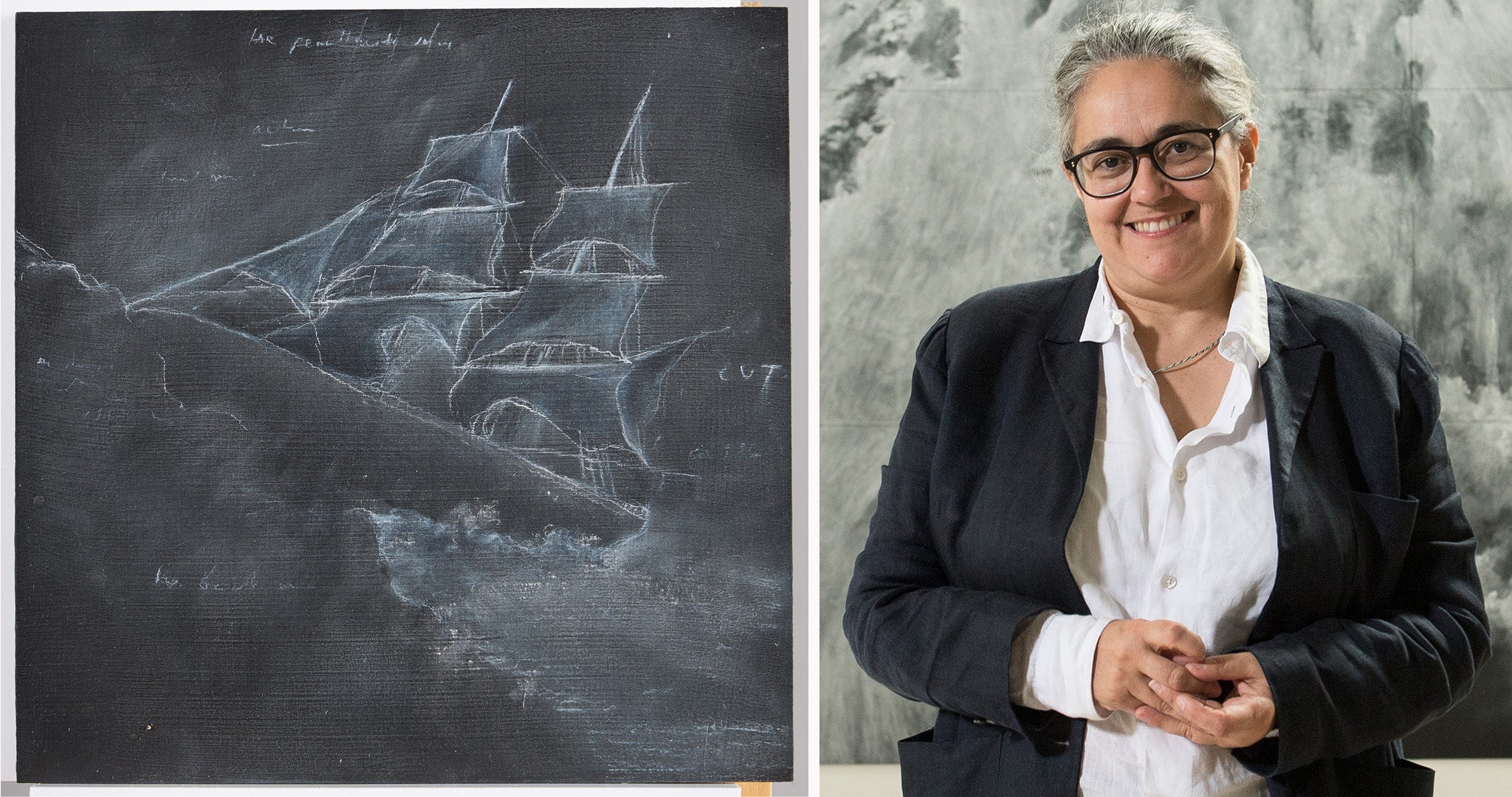
“I chose to do something very identifiable. It’s a shipwreck based on a blackboard drawing I made in 1999. I began trying to make a new board related to my recent cloud drawings but I realised I needed a distinctive motif. I also had to translate a chalk line – chalk being impossible to shrink down – into a different medium and used a white charcoal pencil instead. It was not as expressive as the chalk.
“It felt apposite that the next generation of the Model Art Gallery should take place during the pandemic lockdown. The question is whether there would have been one without lockdown? It was a nice thing to do [scale down work]. I like idiosyncratic things. I look forward to visiting it one day.”
‘Masterpieces in Miniature: The 2021 Model Art Gallery’, from 26 June 2021 to Spring 2022 (pallant.org.uk)






Join our commenting forum
Join thought-provoking conversations, follow other Independent readers and see their replies
Comments